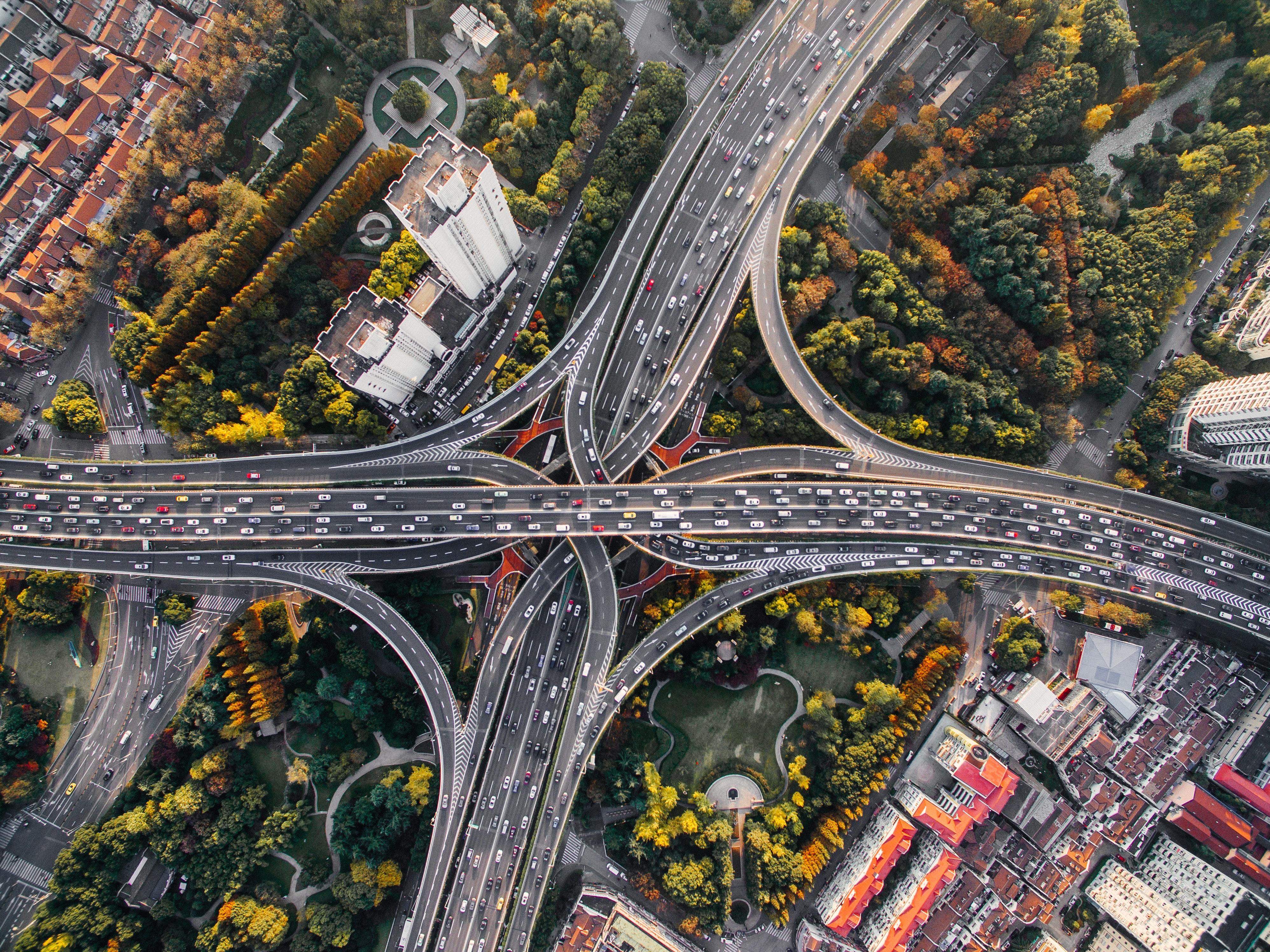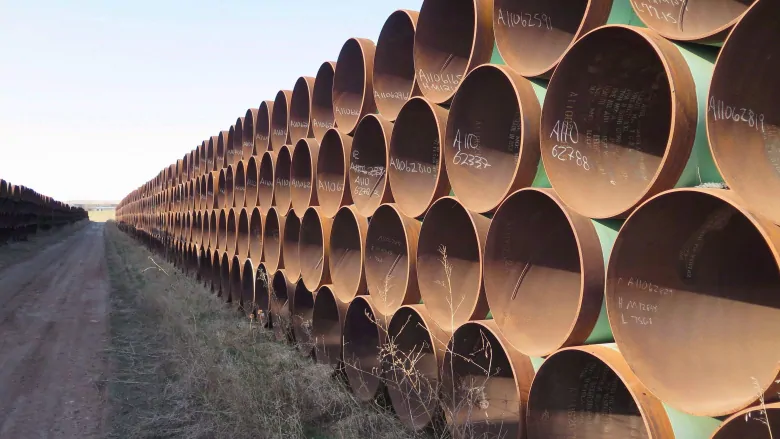By: Deborah Cowen, [University of Toronto, Canada].
This post is a part of our Keywords for Decolonizing Geography series. It was originally published as part of an article titled “Infrastructure, Jurisdiction, Extractivism: Keywords for decolonizing geographies” in the journal Political Geography.
With these brief reflections, I draw attention to some of the stakes of socio-technical systems; what gets done with infrastructure and what it does to us. First, I explore vibrant work emerging out of multiple fields, sectors and movements that may help us conceptualize infrastructure. I then dwell more specifically in the meaning of settler colonial infrastructure, before moving to consider how we might think about infrastructure otherwise, in the final section.
What is infrastructure? I think about infrastructure as matter that shapes motion itself. Brian Larkin (2013) suggests that infrastructures “comprise the architecture for circulation.” Infrastructure can underpin and sustain motion and circulation, but it can also inhibit, disrupt or foreclose motion. By motion, I mean, at least two different things. In its most popular and common meaning, motion refers to the movement of bodies, materials, substances, and signals; the kind of motion that things like roads, rails, pipes, and cables support. This already makes infrastructure vital and profoundly complex; it underpins Harvey’s time-space compression (Harvey, 1990) and often violently sculpts Massey’s power geometries (Massey, 1993). This kind of infrastructure allows us to log on, power up, rinse off, order, eat, fly, ride, wash, heat, and in these brutal times – to remain connected. Or not. Every day, by neglect or by design, infrastructure fails to meet basic needs. But this conception of infrastructure, perhaps an engineers’ definition, is only one of its forms.
Infrastructure is critical not only to the movement of objects, substances, commodities, and bodies, but so too to the motion of daily and intergenerational life, the circulation of desire, the possibility of collective movement, and, according to Lauren Berlant (2016), “the movement or patterning of social form.” This is the kind of motion that law and other social systems of reproduction carry. Law does not regulate an already constituted social order but acts as infrastructure to help bring it into being. Law (not criminality) produces carcerality, for instance. Berlant invites us to see world building as infrastructure making. They suggest that “an infrastructural analysis helps us see what we commonly call structure is not an intractable principle of continuity across space and time, but a convergence of force and value in patterns of movement that’s only solid when seen from a distance” (Berlant, 2016, p. 394). This insistence on motion, even in place of seemingly fixed structure, makes infrastructure irresistible to those of us interested in the ‘how’ of reproduction and its radical transformation.

We can certainly see this with the vernacular infrastructures based in our communities. These are themselves constantly being remade, and constantly having to be repaired and rebuilt. They are not ‘fixed’ but in motion in these ways. One example of this kind of motion is provided by Ruthie Gilmore (2020), the geographer and abolitionist, who insists that “even solidarity needs to be remade and remade and remade, it never just is.” In this way, we can think of infrastructure as an approach to understanding life itself as always in process and motion, but in such a way that is always built or assembled – organized and underpinned.
Through infrastructure, corporations and states but also communities, nations, and all kinds of collectivities materialize and extend particular ways of reproducing themselves. It’s also through infrastructure that wars are waged and genocides committed. Infrastructure may entrench injustice in systems that seem technical rather than technopolitical, and thus can serve to naturalize those relations. And infrastructure does not simply reflect existing inequality but can engineer new forms.

This brings us to the question of settler colonial infrastructure. Colonial reproduction is premised on dispossession, theft, and extraction. This is exactly what settler colonial infrastructures enact. Winona LaDuke and I have written about this continent, “Windigo infrastructures have worked to carve up Turtle Island into preserves of settler jurisdiction, while entrenching and hardening the very means of settler economy and sociality into tangible material structures” (LaDuke & Cowen, 2020, p. 244).
So many formative and brilliant Indigenous thinkers reflect on this very question regarding the ways in which infrastructure has been not just a feature of settler colonialism, but the face of colonial violence. Leanne Simpson (2015), for instance, describes colonialism as a bomb going off in slow motion, which disrupts the rhythms, cycles and movement of Nishnaabeg life. In her discussion of this bombing, she talks about dams that disrupted rivers and dislocated the kinds of motions of more-than-human life through which survival was possible. Nick Estes also speaks centrally about infrastructure in his work. He writes, for instance, in a 2018 piece: “While there are infrastructures of Indigenous resistance, they confront infrastructures of settler colonialism in the form of police, prisons, dams and oil pipelines that intend to destroy, replace, and erase” (para 7). This writing highlights the importance of something sidestepped in mainstream conceptions; the carceral and violent forms of infrastructure underpinning coloniality.
Importantly, these carceral forms – whether in the form of police, prisons, borders, camps, or reserves – were often historically assembled to protect circulatory infrastructures. We could think with Heidi Stark’s powerful article “Criminal Empire,” where she reflects on how the criminalization of Indigenous peoples has historically been enacted and how it continues to be enacted through carceral as well as legal infrastructures. We could also think with Shiri Pasternak in her important paper with Tia Dafnos (Pasternak and Dafnos, 2018, Pasternak and Dafnos, 2018), which highlights the deep entanglement of circulatory and security infrastructures today.
We could also think with Anne Spice, who has written powerfully on this question. In her 2018 paper, “Fighting Invasive Infrastructures: Indigenous Relations against Pipelines,” Spice asserts, “the characterization of oil and gas pipelines as so-called ‘critical infrastructures,’ constitutes a form of settler colonial invasion” (42). She highlights the struggles of water and land protectors not only to defend their territories and their sovereignty, but also to challenge mainstream discourse about what counts as vital infrastructure and for whom. Spice quotes Freda Huson, a spokesperson for the northern British Columbia Wet’suwet’en encampment of Dark House, built in the path of a pipeline. Huson noted that “the pipelines were proposed to run through the clan’s best berry patches,” as Spice describes. By resisting pipeline construction, Huson explains, “what we’re doing here is protecting our critical infrastructure” (40).
The notion that the refusal of colonial infrastructure is a profoundly generative anti-colonial act is at the centre of Audra Simpson’s brilliant book, Mohawk Interruptus (2014). In this work, Simpson offers a series of arguments about the politics of refusal – the refusal to be eliminated, the ethnographic refusal, the refusal that diagnoses settler colonialism’s precarity and even failure. In this work, refusal showcases the exquisite survivance of Mohawk people. Simpson teaches about the power of refusal through accounts of the St. Lawrence Seaway, the Victoria bridge, the Mercer bridge, the long roads to Brooklyn, and of course, the settler state border. Infrastructure here is a site, circuit and means of struggle over sovereignty and jurisdiction.

In the context of an extractive and logistical settler political economy – a way of life based on taking and circulating – refusal in our moment often takes the shape of disrupting or interrupting the logistics of state and society. But Simpson illustrates how the negation of colonial circulation through the refusal of its infrastructures is not just a stand against, but a stand for. The blockade of infrastructure (as refusal) is often where relations are formed, sovereignty and resistance are built, and where Indigenous resurgence gathers strength.
The last theme I would like to address is on the question of infrastructure otherwise. This reflection builds on the questions Spice poses about whose infrastructure is critical or vital, and for what. Spice quotes Huson, who highlights a conception of infrastructure that is fundamentally anti-colonial: infrastructure that is life giving and capable of sustaining not only the body, but the spirit and law, as well. Winona Laduke and I (2020) offer the concept of alimentary infrastructure to conceptualize this kind of anti-colonial feminist assemblage of systems to sustain decolonial life. We suggest that alimentary infrastructures are built in the wake of formal sociotechnical systems, or as is often the case, in struggle against them. Alimentary infrastructures are often makeshift, temporary, or vernacular and built by gleaning and salvage. In this way, we insist that infrastructure is not inherently colonial, but rather essential for social and ecological transformation.
Alternative worlds require alternative infrastructures – systems that allow for sustenance and reproduction. In our work and the work of others, we see how sociotechnical systems can be built to serve community survival rather than imperial expansion, extraction and accumulation. In our joint writing we suggest that effective initiatives for justice, decolonization and planetary survival must center infrastructure in their efforts.
With infrastructure, we must think about the design, ownership and finance of infrastructure, the process and labour through which it is assembled, its political economies and effects. We gravitate to the term ‘alimentary infrastructure’ for how it holds questions of sustenance and care. Alimentary infrastructure refuses ‘expanded reproduction’ or the production of infrastructure for accumulation. In refusing expanded reproduction, alimentary infrastructure supports the regeneration and becoming of more-than-human ecologies. Assembled through refusal and rooted in care and survival, alimentary infrastructures can inspire visions of life with living and open paths to ecological justice and collective flourishing.
